In your tourist tour through the Madrid of the Austrias, In the main Street, halfway between Plaza Mayor and Cathedral of the Almudena, you will find a square that is key in the history of Madrid, the Plaza de la Villa.
When you arrive at this completely pedestrian square you will see that it is one of the few enclaves in the city that still maintains the flavor of medieval times.
But, above all, you will see some of the most important medieval buildings that remain in the capital, such as House and Tower of Lujanes and house of the village, until 2007, headquarters of the Madrid City Council.
The historical importance of Plaza de la Villa, which was originally called San Salvador, is mainly due to the fact that since 1693 it has housed the town hall of the city of Madrid, the aforementioned Villa House.
As you know, it has only been a few years since the town hall headquarters moved to Palace of Cibeles in the popular square of the same name.
All the information in detail
Casa de la Villa, former Madrid City Hall
El Villa House building Construction began in Baroque style in 1645 and was completed in 1693.
Since then it has undergone several renovations, the most important being the one carried out in 1789 by the architect Juan de Villanueva.
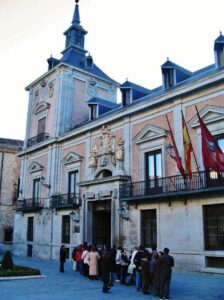
Until recently the house of the village could be visited within the program guided tours of the Madrid City Council, but not currently.
Now it is only used for official events and receptions, and since I have had the opportunity to visit it, to satisfy your curiosity, I am going to tell you which are the most interesting corners of this historic building.
At the outset, the first thing you will find is the so-called Crystal Hall, which was originally a large rectangular interior patio whose second floor had balconies.
But a renovation was carried out so that a second floor was installed in the patio, which was covered with a large glass window that gives its name to the current room.
In this way, the Crystal Hall It has remained a large distribution room from which you can access the different rooms on the second floor through doors that occupy what were previously the balconies.
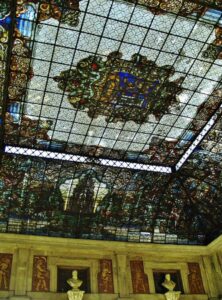
Two are the most outstanding rooms of the House of the Villa of MadridOn the one hand, the so-called Goya Hall, where you will see a copy of a large painting of Goya (the original is in the municipal Museum).
This painting has a curious history as it had to be repainted several times.
In the space where reference is now made to May 2th 1808, he was successively portrayed Joseph Bonaparte, Constitution of Cádiz, again Joseph Bonaparte, and then to Ferdinand VII.
But what will catch your attention the most if you have the opportunity to see the Goya's Hall of the Casa de la Villa It is the original ceiling from the 17th century, from the time of the Austrias, where you can see that the shield of Spain still includes Portugal.
Also noteworthy is the large chandelier, original to the La Granja Crystal Factory.
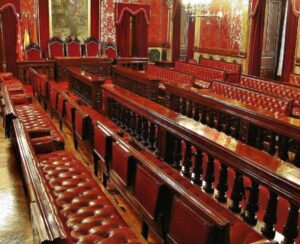
Perhaps the most important room in the House of the Villa of Madrid is Plenary Hall, which is still used by the Madrid City Council.
Renovated during the mayor's time Tender Galvan, in the 80s, with an ornate decoration in which the color red prevails, shows all the splendor required by the main hall of the city's town hall.
The most outstanding thing from an artistic point of view is the decoration of its ceiling.
Inside the house of the village two are also preserved icons of the city of Madrid.
ORGANIZE your TRIP
- Don't forget your TRAVEL INSURANCE with a 5% discount
- Book the HOTEL for your trip
- RENT a CAR for your trip
- The best TOURS and EXCURSIONS in Spanish
- NO-LINE TICKETS for museums and monuments
- Best FREE TOURS around the world
- Book your TRANSFER from the airport
- eSIM card with INTERNET at the best price
On the one hand, the original statue of the Mariblanca, of which there is a copy in the Puerta del Sol.
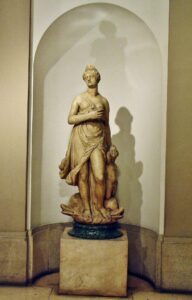
And on the other hand, the Processional custody of Madrid, a huge solid silver cup, weighing 161 kilos, made in 1563 by Francisco Álvarez in plateresque style, which is still used in the festival of Corpus Christi.
Torre de Lujanes, medieval house in Plaza de la Villa
In front of house of the village can you see her House and Tower of the Lujanes, one of the oldest medieval buildings in Madrid, dating back to the year 1494 .
It is known as House and Tower of the Lujanes, an architectural complex that was ordered to be built by Alvaro de Lujan in 1494. , and was inhabited by successive generations of the family of the Lujanes, where its name comes from.
The medieval house shows us the characteristic architectural style, with exposed brick facades, of the houses of medieval Madrid, of which very few samples currently remain, highlighting the House Museum of Lope de Vega.
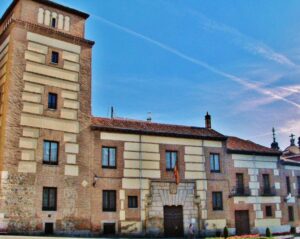
In the Tower of the LujanesIn particular, you can see reminiscences of both Gothic architecture as Mudejar.
As a curiosity, it is said that the King Francis I of France spent time in Tower of the Lujanes after being captured after the defeat of the Battle of Pavia (1520)
And, on the other hand, given that at the beginning of the 19th century said tower was one of the tallest civil buildings in Madrid, in the reign of Ferdinand VII It was used to install an optical telegraph tower.
For the last two centuries, this building has been the headquarters of various academic and official organizations, such as the Municipal newspaper archive until his transfer to Headquarters of Conde Duque in 1983.
Cisneros House
And at the bottom of the Plaza de la Villa you will see the rear façade of the Cisneros House, since the main one faces the Sacramento Street.

This Plateresque style palace house dates back to 1537, and was ordered to be built by a nephew of the Cardinal Cisneros.
In front of the Casa de Cisneros is the monument tol sailor Alvaro de Bazán.
This bronze statue sculpted by Mariano Benlliure was installed in the Plaza de la Villa in december 1891.
Initially it was located in the center of the square, although currently, after its pedestrianization, you will see it at the back of it.


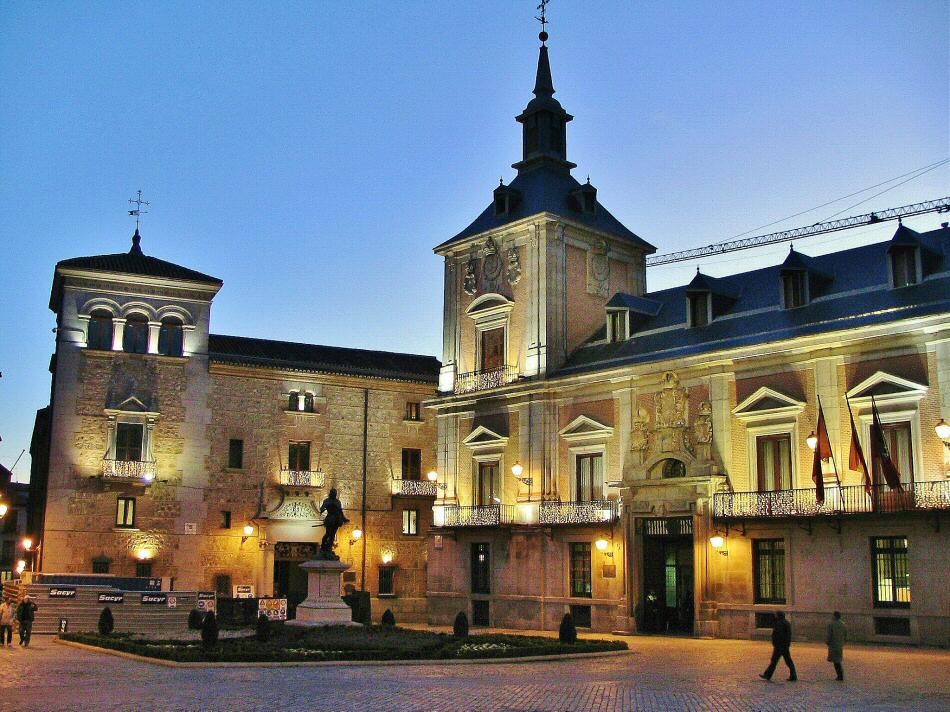
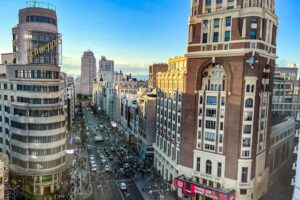
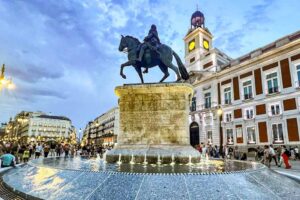
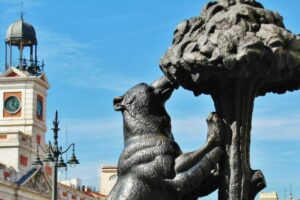











Comment